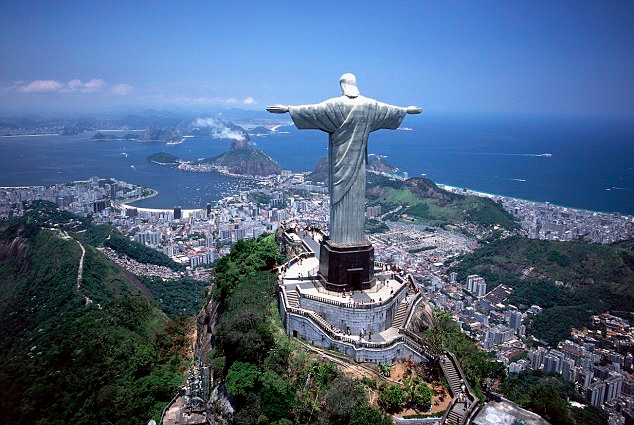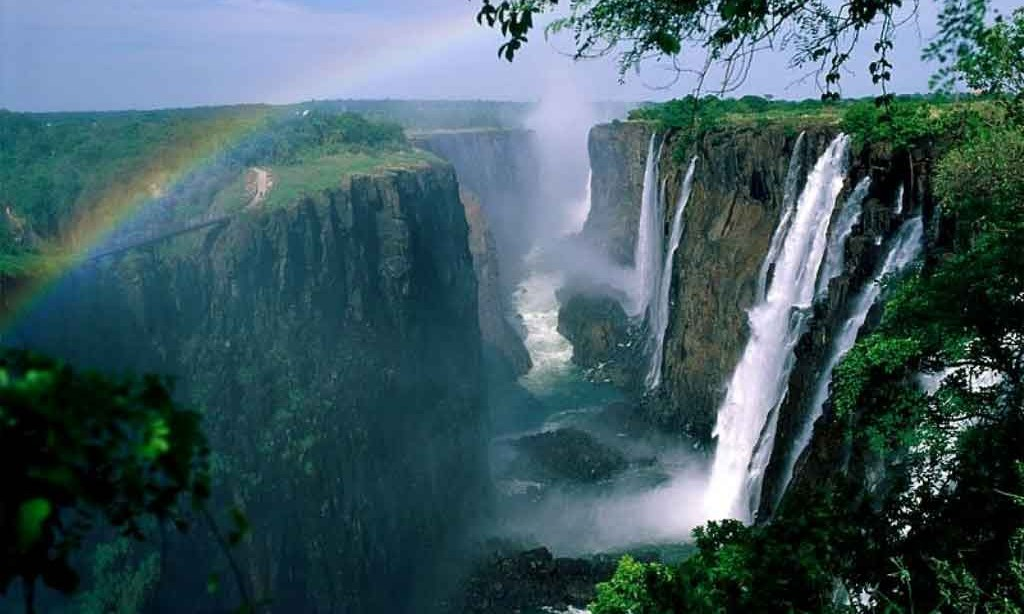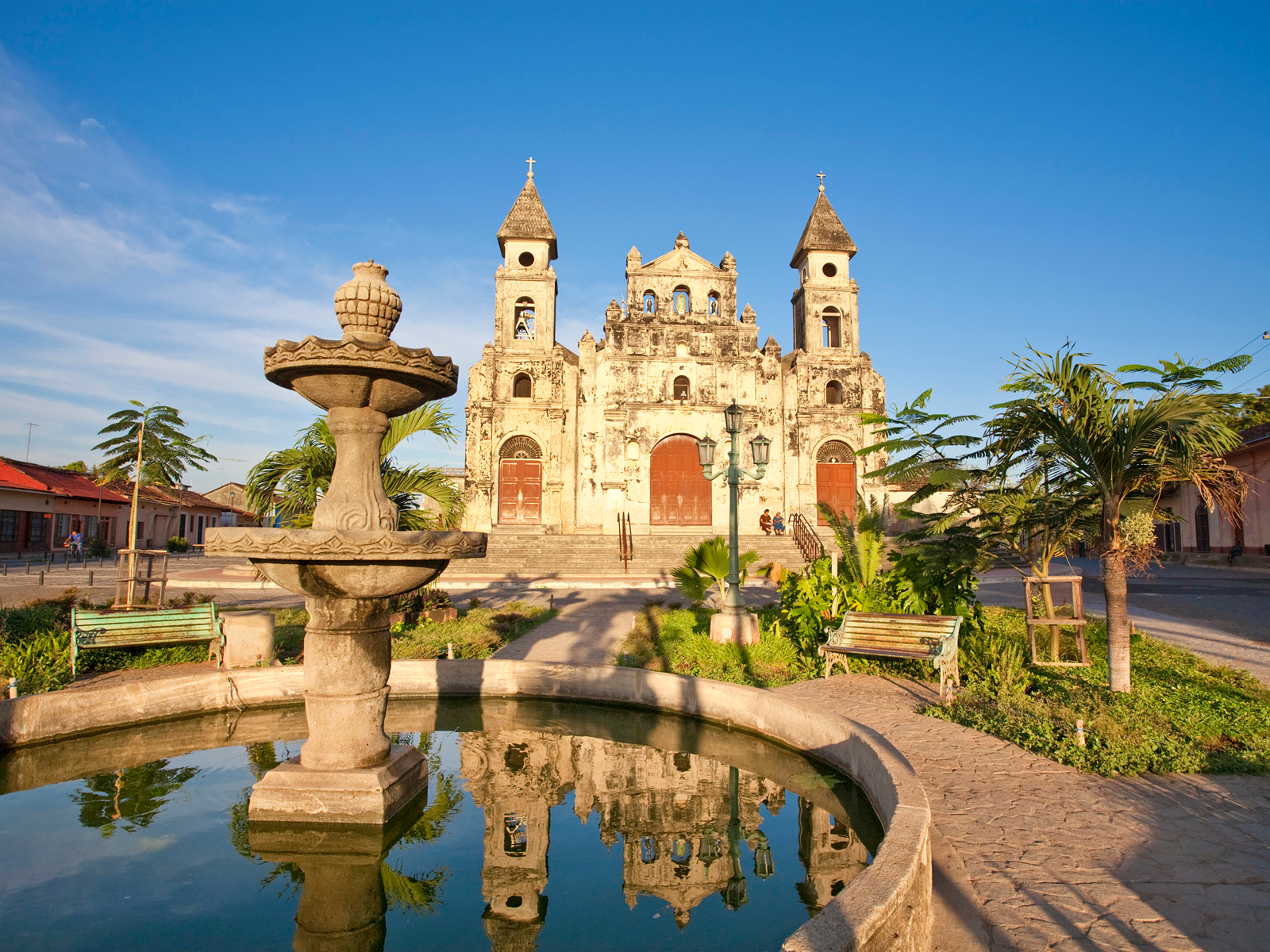South America: A place of adventure
In depth posts about "The Motorcycle Diaries" and other Latin American countries' cultures and current events.
Thursday, May 29, 2014
How I feel now that it is over
Being able to do this project really opened my eyes to what I think of south america. This was a privilege because I was able to have a personal interview with Alex Chacon who is practically a celebrity. I wish more people would have come across our blog because anyone who looked at it would have been instantly hooked. My only regrets about doing this project is that we only had a little amount of time to do it. It would have been fun if we started this at the start of the year so the by now we could see how we progressed throughout humanities and our sophomore year. "The Motorcycle Diaries" by Che Guevara was a fantastic book to read. My view of Che changed an abnormal amount throughout the book. At first I thought of him as someone that just wanted to go on an adventure before he settles down, but I soon saw someone in him that cared for the people around him and just wanted to help people in what ever ways he could. After watching a documentary about him later in his life he still had that mind set but in a different way. What I mean by that is that he cared for the people he fought next to, to a point in which they were like sons to him and each one of them viewed him as a father figure that would protect them. I would recommend this book to everyone because it shines a light on the people of south america and show them for what they really are and not what we think of them as. I feel like most people of north america think of them to be these bad people that just try to smuggle drugs into our "perfect" little society, but this is not even remotely the case. All the people that Alex, Alberto, and Che witnessed were more than welcoming to them, they would welcome them into their homes, feed them and treat them just like family even if the family had close to nothing. It was cool to be able to read that and then right after talk to someone that actually did. Both the book and Alex's journey had similar aspects but one thing was for sure Alex was much more prepared for what lied ahead. Even though Che and Alberto faced many challenges they were different than the ones Alex had to face. Theirs included their bike breaking down time and time again till it finally gave up and they had no reliable source of transportation. The challenges that Alex faces were more along the lines of not knowing which road to take because a good amount of them were unmarked. In the end I am happy I did this project and that I could do it with a group that cared just as much as I did about what we were learning.
Tuesday, May 27, 2014
What I am taking away
After reading "The Motorcycle Diaries" by Ernesto Guevara, my eyes have been open to a world that I had not witnessed before. Prior to opening to the first chapter I had not heard of Che Guevara and how he was a main influence in the Castro regime. When I started reading I only thought of Che as a young medical student eager to travel throughout South America, however I quickly learned that he's much more than that, he's a caring man who wants to better the world in any way he can. In his personal journal he wrote about all the injustice and inequalities he saw on his journey. On one incident he writes about how capitalism has poisoned South America after touring a coal mine in Chile. In the coal mine he witnessed all the workers were native citizens while an American company exploited them with minimal pay, poor working conditions, and excessively hard work. This annoyed Che and made him want to end the touring there to continue his journey. Progressing in his journey Che saw other injustices such as mistreated elderly or abused power, despite the negative events Che tried his best to help anyone he could. He especially wanted to visit a leper colony to help those who had been quarantined from normal society. When Che finally got his wish he spent as much time as he could with the people of the colony talking to them person-to-person with out any protective mask, clothing, or even gloves when shaking hands. He really wanted to make them feel like human beings because the citizens of the colony were kept on a regular basis in crummy shacks with other sick. When they saw the non-sick they were usually covered head to toe in anti-bacterial suits. This made me realize that Che didn't care if they were sick only that they were human. This is a concept that stood with him into his years as a guerrilla leader, he did the things he did in order to equalize all humans not to gain power and rule the world. This is what iv'e taken away from reading "The Motorcycle Diaries", to see past all in-differences like Che, to see a human the same as me.
Monday, May 26, 2014
Motorcycle Diaries Book Review
In the time that I read The Motorcycle Diaries, I was able to see the story of change through many different perspectives. As Ché traveled throughout South America, his mind was opened to new ideas. Ché started out on a motorcycle with a friend and started off on a journey of a lifetime across South America, what it turned into however, was one of the largest revolutions of all time. Ché just graduated medical school and decide that going straight into the field was not why he wanted to do. So with this decision he sacrificed everything to travel. The two started off in Argentina and ultimately started meeting new people who would also tag along with the two. As Ché and his new band of friends travel South America, they run into many problems such as altercations with natives in Peru, and more importantly meeting Ché's first wife who would implant the idea of communism in his brain. Ché underwent a period of serious change during this journey. This is crucial for the events that would soon follow after he would separate from his motorcycle friends. Ché met Fidel and Raúl Castro after he separated his friend. These two men lead the revolution against Fulgencio Batista. Ché was now responsible for the overthrow of Batista. The three men then decide to place the new socialist government in Cuba. Ché was at the point in his life where his experiences with his friends and new ideas started to take him away from his hard earned career path as a doctor. Ché wanted to keep exploring and wanted to do what his heart was telling him to do. Ché’s motives were ultimately revolutionary, this leads to the Cuban Trade Embargo and ultimately his death in Bolivia. Ché wanted to change the way that people ran countries. He despised the United States way of running it and made sure everyone new. The book The Motorcycle Diaries, details the way that Ché changed throughout his life. The influence and though of communism lead him to be one of the most famous revolutionaries in history. his face is still plastered all over South America and will be remembered forever. The Motorcycle Diaries, simply outlines and shows the ways he changed over his long eventful journey
South America, what a place
| (In the picture above it is an example of the falls during a sun set.) |
Thursday, May 22, 2014
Map of Che and Alberto's Journey and His time in Africa
This is a map of Che and Alberto's Journey in South America, keep in mind that this is only a map of their journey and not his entire life. The map starts the journey from the bottom in Argentina (where the book started off) and shows how they made their way North as the story progressed.The map ends in Cuba where Che then after returned to Argentina. Che also spent some time in Africa. In 1965, Che visited the Congo for about a year in order to get away from the U.S. His purpose for going was to spark an anti-western revolution and to gain supporters and recruit soldiers for his cause. Che's efforts were stopped by a man named Colonel "Mad Mike" Hoare. Michael Hoare had been contracted by the American Government in Kinshasa. Colonel Hoare and his mercenaries pushed Che's small
militia onto the shore of Lake Tanganyika and forcing them to escape by crossing it and crossing through some Tanzinia territory. Che later returned to Cuba and reunited with Castro.
| Colonel "Mad Mike" Hoare |
| Che posing with a baby and a soldier in one of the Congolese villages. |
Wednesday, May 21, 2014
Cuban Political Cartoons
This cartoon Fidel and handing over the "torch" of Cuba to his younger brother Raul, who is also very old and was with Fidel and Che during the Cuban revolution. Raul fully supports what his brother did and what he stands for. Raul has been the president of Cuba since 2008 and has tried to help the country for many years. This picture is from an American perspective and shows that the older and bashful Fidel Castro who hasn't helped much is now passing the torch to his brother who is just years younger. In the book The Motorcycle Diaries, Che Guevara discusses the relationship that Fidel and Raul share. It is a very tight and loving brother bond that could never be split. Raul looks up to Fidel all the time, and it was a dream come true when Raul was able to revive control of Cuba from his older brother. This cartoon shows the irony in Fidel Castro giving the country of Cuba to his brother who also is very old and is highly unlikely to change any laws and regulations that his brother has put in place. As Cuba continues to struggle with the government that is in place, the country will only stay the same and possibly get worse. This cartoon illustrates the problems and irony residing in Cuba.
This picture is from the Cuban perspective and shows President Barrack Obama keeping the embargo against Cuba that has been in place since the Cuban Missile Crisis. The man with Florida is Uncle Sam and he is trying to control and keep Cuba away and out of the US. Uncle Sam's arm says embargo and that is the United states hand trying to "choke" Cuba so that they are unable to trade with the United States. Although the book did not have any description of Che's involvement in the Cuban Missile Crisis, we know that Che was heavily opposing of the US's reaction. Che ultimately started the crisis by befriending and asking the Soviet Union for help during the Cold War. This lead to the Embargo which is still continued to this day. The relevance of this cartoon is very prevalent. The trade embargo with Cuba has forbid anything from Cuba to enter the country and most Americans cannot travel to Cuba, unless they apply to get a special permit and pass. This is a problem for both countries but more so Cuba. One of the most profitable markets in Cuba is its tourism, and Americans are always ready to spend hundreds to have a good time. With the embargo still in place Cuba is unable to hit and profit from this market.
Top Ten places to visit in South America
This is a list I compiled of the top ten places to visit in South America, keep in mind that these countries are not all spanish speaking countries (ie Brazil) and that this list is based on research and personal opinion (seeing as to how I’ve been to South America on multiple occasions) . South America is home to some of the most beautiful places on the planet and I figure if we have a blog all about South America then it’s important to recognize it’s beauty as well as it’s struggles. Che Guevara
#1) Rio de Janeiro, Brazil
With it’s warm white sands, gorgeous vistas and vibrant nightlife, Rio de Janeiro makes for a fun getaway at any time of year. Whether you're looking for a glittery Carnival costume or a striking view of Christ the Redeemer you won’t be disappointed with what you find in this amazing city. I have been to Rio three times before and I can confidently say that it is my dream destination and my go-to vacation spot. 
(“Christ the Redeemer” Statue in Rio de janeiro Brazil)
#2) Buenos Aires, Argentina
This sophisticated city known as the "Paris of the South" has a lot going for it. You'll find it hard not to fall in love with Buenos Aires' wide boulevards and Parisian-style cafes. Buenos Aires suits all types of vacationers. Arrive in fall or spring for gorgeous foliage and all around good company from the people of Buenos Aires. Guevara and Alberto soon set off from Buenos Aires, Argentina, astride a 1939 Norton 500 cc motorcycle they named La Poderosa II (The Mighty One) with the idea of eventually spending a few weeks volunteering at the San Pablo Leper colony in Peru on the banks of the Amazon River. They later returned to Buenos Aires at the end of August after spending a month in Miami. He returned to medical school by October of 1952.
(“The Obelisk” commemorative landmark in the city)
#3) Cusco, Peru
As the former capital of the Inca Empire, Cusco is the home base for travelers visiting the legendary Machu Picchu. If you're not worn out from the hike along the Inca Trail, spend time marveling at lesser-known attractions like the extensive Pre-Columbian Museum. Cuzco made an impression on Che and Alberto on March 1st, 1952 as they spent time studying the architecture and wandering the cities museums and libraries. In Cuzco a local doctor provided them a Land Rover to take them to the Valley of the Incas.
#4) Costa Rica
Costa Rica is more than a simple beach vacation. There are volcanoes to hike, misty rainforests to explore and a vibrant culture to experience. Be forewarned: You'll find it super hard to find a reason to leave.
#5) The Galápagos Islands
The Galápagos Islands are best known for their rich array of creatures — ranging from giant tortoises and lizards to seals and penguins. Getting here will cost you, but isn't admiring towering volcanoes, gorgeous sands and unique wildlife worth it? 
(Helicopter shot of one of the main islands)
#6) Easter Island, Chile
Easter Island, also known as “Isla de Pascua” or “Rapa Nui” by the Spanish and Polynesian, is one of the most alluring sacred sites on Earth. Famous for its enigmatic giant stone figures, the Moai were built centuries ago, but continue to remain a mystery and our only link to the demise of this isolated Polynesian culture.
#7) Angel Falls, Venezuela
Veer off the beaten course for a little adventure and a lot of adrenaline. The tallest waterfall in the world at 3,212 feet promises just that. Take in the views via helicopter, only then will you fully capture the thrill and immensity of this natural wonder. 
(Helicopter View of the falls)
#8) Granada, Nicaragua
A colonial destination, Granada is the first European town established on mainland America. Explore their open-air markets, beautiful street walk ways and colorful architecture. If you should find yourself outlining the details of your retirement while in town, so be it. 
(The Historical Guadalupe Church)
#9) Lima, Peru
Lima, founded by Francisco Pizarro in 1535, is a fascinating city and a treasure trove of history. Explore ancient Incan archeological sites, or stroll through the elegant cathedrals and opulent palaces dating from Spanish colonial times. Downtown Lima is crowded, but you'll enjoy exploring the city's neighborhoods—especially the beachfront areas, which have great shopping and dining and fabulous hotels. On May 1st, 1952 Che and Alberto arrived in Lima, Peru and during this time Guevara met doctor Hugo Pesce, a Peruvian scientist, director of the national leprosy program, and an important local Marxist. They discuss several nights until the early morning and years later Che identified these conversations as being very important for his evolution in attitude towards life and society.
(Lima Skyline)
#10) Bogotá, Colombia
Ten million people call vibrant, passionate, sprawling Bogota home. The energy of this metropolitan heart of columbia is fueled by it’s hundreds of eclectic and authentic dining hot spots, fantastic wines, and frequent foodie festivals. Try asking the locals where they like to eat, then walk off your empanadas and aji with a stroll through the historic district of La Candelaria or during an indulgent shopping adventure on the North Side. On July 2, 1952 Ernesto and Alberto caught a Catalina flying boat to the capital. While visiting Bogotá, Colombia, he wrote a letter to his mother on July 6, 1952. In the letter he describes the conditions under the right-wing government of Conservative Laureano Gómez as the following: There is more repression of individual freedom here than in any country we've been to, the police patrol the streets carrying rifles and demand your papers every few minutes.
Subscribe to:
Comments (Atom)